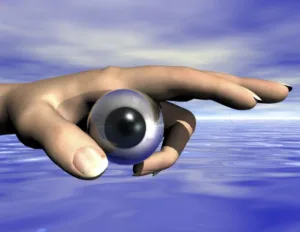After last year’s Infocomm expo, I wrote: “Many 4K and 3D displays throughout the two main exhibit halls were simply upsetting to watch.
Apparently, many folks still don’t know how to show 3D or 4K without causing nausea or discomfort.” In that article, I noted that stalwarts like LG, Christie, and several other manufacturers really knew what they were doing, pushing their video content out to passersby in a slower “savoring” mode, which is particularly appealing to the educational customer.
I have good news to report this year for Infocomm 2015. The visual tumult is rapidly receding. 4K UHD 8K 3D (choose one) were everywhere, and the images were almost always comfortable and attention-getting at the same time. And that’s a good thing. Admittedly, profound visual tumult is not a good way to appeal to educators, let alone other customers. Brain research tells us that vision is king, that 80% of brain activity supports our vision. So why go and muck it up?
Kudos to Samsung for offering such comfortable autostereoscopic displays. Panasonic’s enormous booth was the most improved. (I spoke in a one-off conversation with a Panasonic manager, who admitted that last year’s roller coaster virtual reality display nauseated a number of people, turning them off to the promise and potential of the technology.) This year, Panasonic offered one of the most visually pleasing booths at Infocomm 2015—and large crowds ensued and lingered. Lesson learned. Well, part of it. The experience evidently scared Panasonic away from the virtual reality experience. Yet it was the content—not the technology—that caused that old problem. Please don’t throw the baby out with the bathwater.
 The ISTE expo hall was filled with content that was comfortable to view
The ISTE expo hall was filled with content that was comfortable to view
So at Infocomm 2015, gone were the wild rides, churning river rapid trips, or spiraling head-turning motion. Good riddance. That sort of content displayed on premium equipment conveys an inaccurate sense to educators and other customers that the technology is somehow not ready for prime time.
A Poke in the Eye
Not all the ocular tumult was gone, however. I found the following instances of retinal abuse, instances that earn my infamous “poke-in-the eye” awards:
- Sony earns two “poke-in-the eye” awards. The first is for their Expanded Perception display that made me, the people alongside me, and other viewers suffer from nausea. That is just not the way to sell leading technology. (Again, it’s about the content, not Sony’s remarkable equipment.) Sony earned a second poke-in-the eye” award when the sales rep rudely brushed off my simple explanation to my peers (also customers) that the powerful technology was not to blame, just the content.
- Wavien earns a “poke-in-the eye” award for their 4D edge violations and general visual discomfort. Fix it.
- Infitec, despite a remarkable stereoscopic technology that I deeply value, earns a “poke-in-the eye” award for running a Nuremburg-designed cartoon video that simply had too much motion and turning for a quality stereo 3D experience. Unfortunately, the video contradicted the strengths of their offering.
- All autostereoscopic displays at the conference (except Samsung) also earn a “poke in the eye.”
There are obvious lessons to be learned for the display industry in all this: never allow the content being displayed on your marvelous technology to contravene your amazing technology. And never permit selecting your display content to become a hurried afterthought. – (LS)

